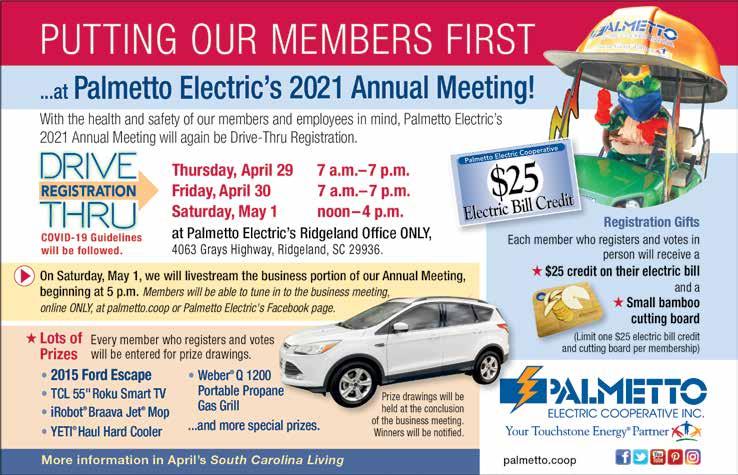
3 minute read
Ecommerce Opportunities Start
ECOMMERCE
FOR ENTREPRENEURS
Advertisement
OPTIONS TO START SELLING PRODUCTS ONLINE
BY ANITA CAMPBELL
The U.S. ecommerce market brought in more than $504 billion in revenue in 2018. And it’s expected to grow to more than $735 billion by 2023.
With so much potential in the market, it’s the perfect time for entrepreneurs to get started selling products online. Today’s sellers have a ton of options to make this happen. Here are five of the most popular.
YOUR OWN ECOMMERCE STORE
Building an ecommerce store from scratch is the most traditional option. With this option, you need to find your own website hosting and domain. Then you need to design the layout, add products and fill it with content. You can hire a designer or developer to do some of this for you.
You’ll have your own site that you can control every aspect of. You have the freedom to add new products, change content and fiddle with the back-end functionality.
HOSTED ECOMMERCE PLATFORMS
Hosted ecommerce platforms differ from dedicated ecommerce sites because most of the work that goes into creating the site is done for you. Shopify, BigCommerce and Big Cartel are examples. They allow you to quickly set up a storefront from a select set of options. Often you can choose from themes and templates. Some even offer further customization options. They also give you instructions for adding products, photos and other content.
To your customers, this might appear like an ecommerce site that you set up on your own. But if you have specific design or back-end preferences, they might not be available. Additionally, this type of site is often easier or less expensive to get up and running. They usually charge monthly fees that may exceed basic hosting fees over time.
MARKETPLACE SITES
Marketplace sites include things like Etsy, eBay and Amazon, where small businesses can sell their products alongside other sellers. On the back end, these work like hosted ecommerce platforms. But there are usually fewer options for customization. Most of these sites also charge a listing fee or take a percentage of each sale.

However, these sites have one very clear benefit over other options — a built-in audience. Amazon gets nearly 59 million monthly unique visitors. EBay gets nearly 27 million. And Etsy gets nearly 16 million who are specifically looking for vintage or handmade products.
In searches, your products will most likely show up alongside others from competing sellers. But the chances that you’d get all those visitors to your own website are slim. If you’re able to create attractive listings that set your products apart, this could be the option for you. Some sellers make their products available on these platforms, while keeping their own dedicated sites for loyal shoppers.
SOCIAL MEDIA
Today, about 72 percent of U.S. adults use at least one social media platform. The options for selling products on social media vary by platform. Facebook, for example, allows page owners to set up storefronts on their business page. Instagram has a feature that lets users create shoppable posts.
The built-in audience is the key benefit of this option. However, many of the people spending time on social media aren’t in the mindset of making purchases. You may have to do more work to convert buyers.
ECOMMERCE ADD-ONS
Ecommerce add-ons give you an option that sits somewhere between building your own site and using a hosted platform. You create your own site and then use plug-ins or pre-made options to facilitate things like payments or buy buttons.
This makes the process of getting up and running easier and can save you money in the long run. However, there are a lot of moving parts to organize if you go this route; it can get a bit complicated.
Anita Campbell runs online communities and information websites. The Small Business Administration helps small business owners and entrepreneurs start, grow and expand.











